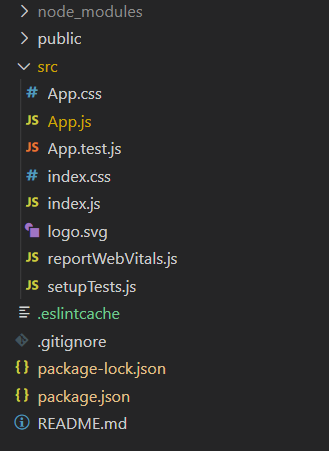ReactJS Reactstrap Collapse Component
Last Updated :
07 Mar, 2024
Reactstrap is a popular front-end library that is easy to use React Bootstrap 4 components. This library contains the stateless React components for Bootstrap 4. The Collapse component is used as a content area that can be collapsed and expanded. We can use the following approach in ReactJS to use the ReactJS Reactstrap Collapse Component.
Collapse Props:
- inOpen: It is used to show the component.
- children: It is used to pass the children element to this component.
- tag: It is used to denote the tag for our collapse component.
- className: It is used to denote the class name for styling.
- navbar: It is used to indicate whether it is associate with the navbar component or not.
- cssModule: It is used to denote the CSS module for styling.
- innerRef: It is used to denote the inner reference element.
- mountOnEnter: It is used to mount the component as it waits until the first enter transition is triggered.
- unmountOnExit: It is used to unmount the component.
- appear: When the component mounts, it is used to run the collapse-in animation.
- enter: It is used to enable or disable enter transitions
- exit: It is used to enable or disable exit transitions
- timeout: It is used to denote the duration of collapse animation in milliseconds.
- addEndListener: It is used to denote a function that listens to an end event.
- onEnter: It is a callback function that is triggered before the component collapse in.
- onEntered: It is a callback function that is triggered after the has component collapsed in.
- onEntering: It is a callback function that is triggered after the component starts to collapse in.
- onExit: It is a callback function that is triggered before the component collapse out.
- onExited: It is a callback function that is triggered after the component has collapsed out.
- onExiting: It is a callback function that is triggered after the component starts to collapse out.
- baseClass: It is used to denote the class that is always applied to the collapse element.
- baseClassActive: It is used to denote the class applied to the collapse element when it is in an active state.
Creating React Application And Installing Module:
Step 1: Create a React application using the following command:
npx create-react-app foldername
Step 2: After creating your project folder i.e. foldername, move to it using the following command:
cd foldername
Step 3: After creating the ReactJS application, Install the required module using the following command:
npm install reactstrap bootstrap
Project Structure: It will look like the following.

Project Structure
Example: Now write down the following code in the App.js file. Here, App is our default component where we have written our code.
Javascript
import React from 'react'
import 'bootstrap/dist/css/bootstrap.min.css';
import { Collapse, Button } from "reactstrap"
function App() {
const [isOpen, setIsOpen] = React.useState(false);
return (
<div style={{
display: 'block', width: 900, padding: 30
}}>
<h4>ReactJS Reactstrap Collapse Component</h4>
<Button color="primary" onClick={() => {
setIsOpen(!isOpen)
}}>Toggle Me to see Collapse Component!</Button>
<Collapse isOpen={isOpen}>
<p>I am sample Text to display</p>
</Collapse>
</div >
);
}
export default App;
|
Step to Run Application: Run the application using the following command from the root directory of the project:
npm start
Output: Now open your browser and go to http://localhost:3000/, you will see the following output:

Like Article
Suggest improvement
Share your thoughts in the comments
Please Login to comment...